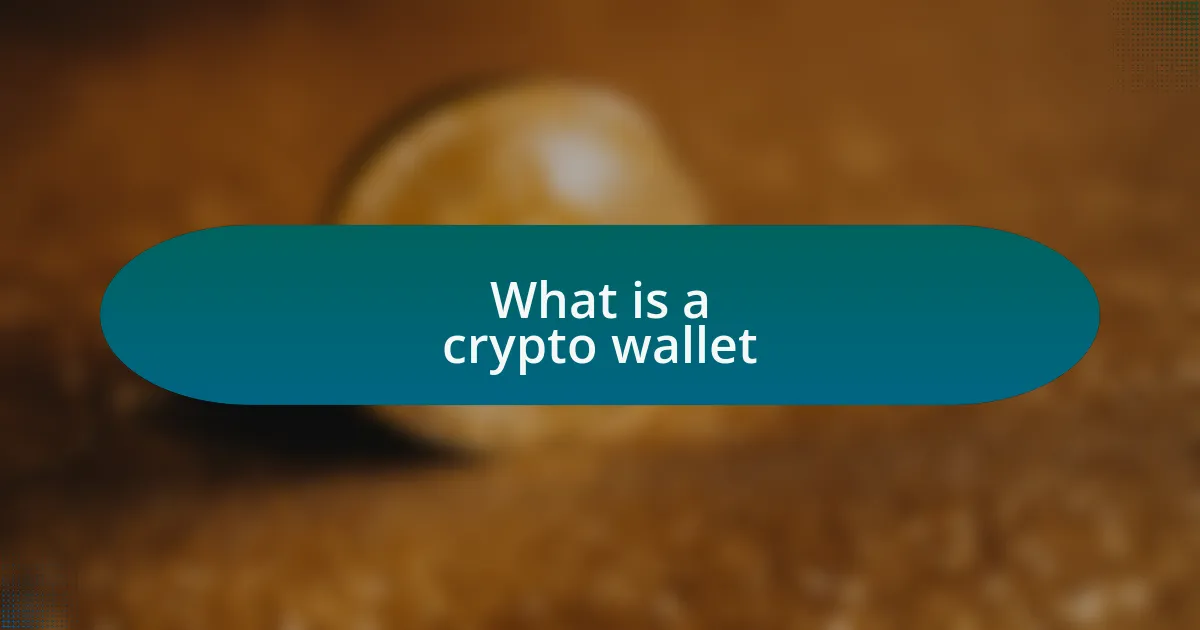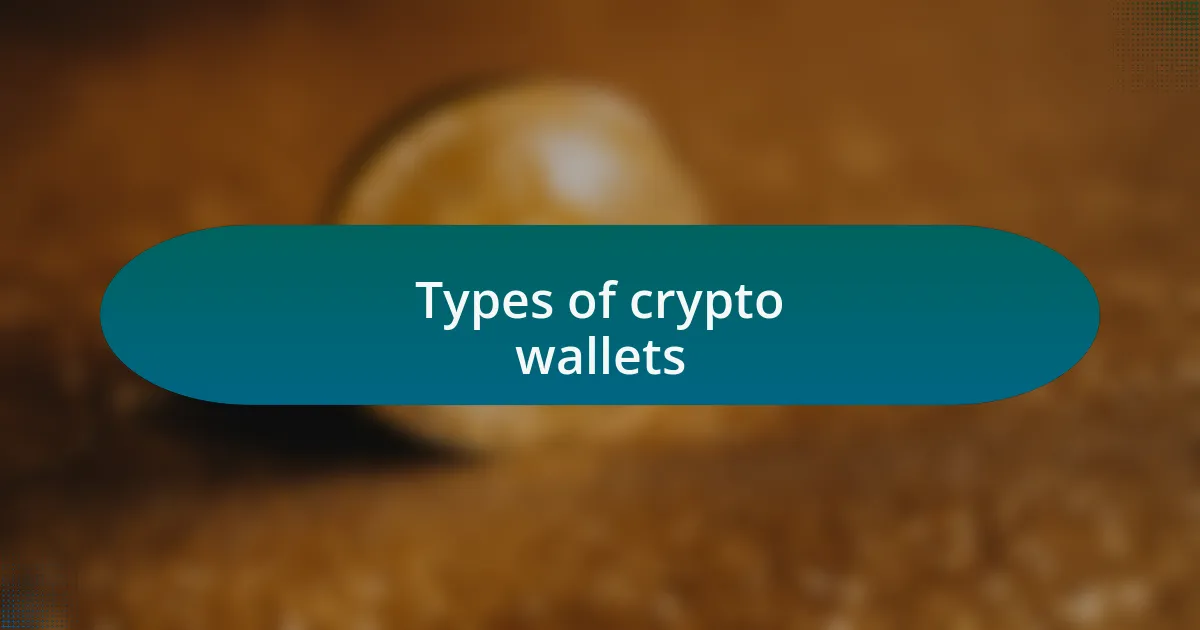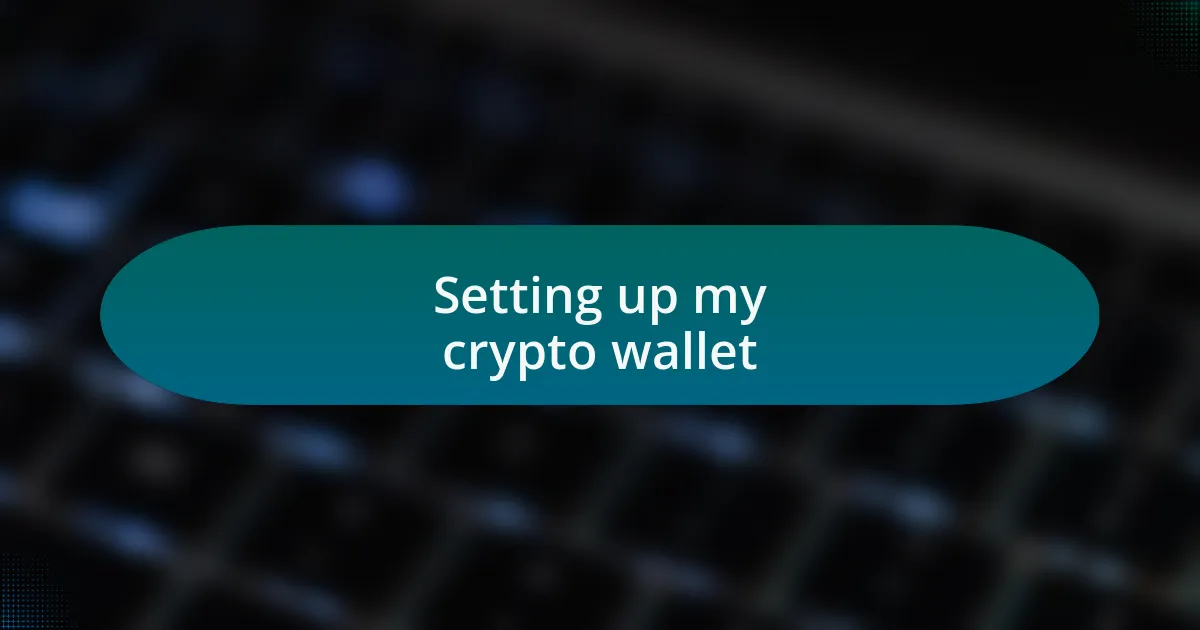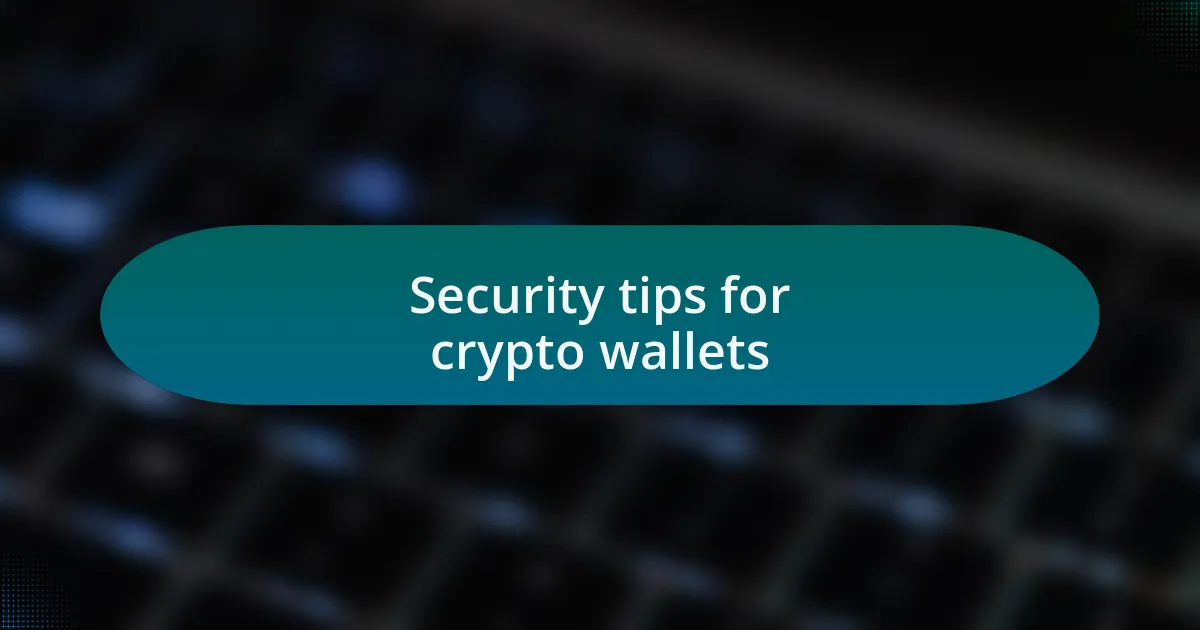Key takeaways:
- A crypto wallet functions like a digital bank account, allowing users to store, send, and receive cryptocurrencies, emphasizing personal responsibility for security.
- Hot wallets offer convenience but come with risks; cold wallets provide enhanced security by being offline, while paper wallets present a non-digital option for asset storage.
- Setting up a crypto wallet involves careful selection based on trading style and security, with key steps including PIN generation and recovery phrase backup.
- Implementing security measures like two-factor authentication, regular software updates, and avoiding public Wi-Fi are crucial for protecting crypto assets.

What is a crypto wallet
A crypto wallet is essentially a software or hardware tool that allows users to store, send, and receive cryptocurrencies. It works like a digital bank account but without the traditional financial institutions involved. When I first dived into crypto, I remember the overwhelming feeling of choosing the right wallet. It felt like picking a safe for a treasure – where do I securely keep my valuable assets?
There are different types of wallets available, such as hot wallets, which are connected to the internet, and cold wallets, which are offline. The distinction often left me wondering: is convenience worth the risk? For instance, I started with a hot wallet to make quick trades, but that opened my eyes to the vulnerabilities that come with online access. It’s fascinating how something as simple as a wallet can reflect our personal approach to risk and security in the crypto world.
What truly struck me about my experience using crypto wallets is the sense of autonomy they provide. Unlike traditional banks, I felt a heightened sense of ownership over my funds, yet that also came with a weight of responsibility. Have you ever felt that rush of empowerment balanced with a hint of anxiety? Managing private keys and recovery phrases can feel daunting, but mastering these essentials offers a profound connection to your assets and the broader crypto community.

Types of crypto wallets
When it comes to types of crypto wallets, I found my experiences with hot wallets quite enlightening. These are convenient and user-friendly since they are always online, making trading instant and easy. However, I still remember the nagging feeling of vulnerability, especially when I heard stories of exchanges getting hacked. It’s like having your keys to a house out in the open—there’s a thrill, but also a risk. How can you enjoy the benefits without the constant worry?
Cold wallets, on the other hand, shifted my perspective entirely. Using a hardware wallet for the first time felt like locking my valuables in a safe that only I could access. The process of transferring my assets offline was surprisingly rewarding. There’s a sense of calm that comes with knowing my investments are insulated from cyber threats. Have you ever felt that peace of mind when you know your belongings are protected?
Then there are paper wallets, a method I encountered during my crypto journey that felt like stepping back in time. Writing down my private key on a piece of paper allowed me to detach from technology completely. The act of creating a physical representation of my digital assets was strangely satisfying. Who knew that something so analog could feel like an anchor in the fast-paced world of crypto?

Setting up my crypto wallet
Setting up my crypto wallet felt like embarking on a new adventure. The first step was choosing the right wallet type that aligned with my trading style and security preferences. I remember sitting in front of my computer, scrolling through options, weighing the pros and cons as if I were picking the perfect companion for a journey. Which wallet would give me the best balance of accessibility and security?
Once I zeroed in on a hardware wallet, the setup process was surprisingly straightforward. I followed the on-screen instructions, and every step felt like a small victory, from generating a secure PIN to backing up my recovery phrase. That moment of writing down the phrase was significant for me; it was a blend of excitement and a bit of fear. What if I lost it? It’s a daunting thought, but I knew I was taking the proper precautions to safeguard my assets.
As I navigated the final steps, I found myself reflecting on the responsibility that comes with managing a crypto wallet. It’s empowering to hold my keys, yet there’s an underlying weight of vigilance required. Have you ever felt that mix of confidence and caution? In that moment, I realized I wasn’t just setting up a wallet; I was stepping into a new realm of financial independence.

Security tips for crypto wallets
When it comes to securing my crypto wallet, I’ve learned the importance of using two-factor authentication (2FA). It adds an extra layer of protection beyond just my password. I remember the first time I set up 2FA; I felt a surge of relief knowing that even if my password were compromised, there was an added defense. Have you ever felt that same reassurance knowing your account is better protected?
I also make it a habit to regularly update my wallet software. Keeping everything up to date might seem tedious, but it’s essential for security. Once, I neglected an update and ended up experiencing some issues that reminded me of the consequences. That moment taught me the hard way: in the world of crypto, staying current is not just about features; it’s about safeguarding my investments.
Another key takeaway from my experience is being cautious with public Wi-Fi. I try to avoid accessing my wallet on untrusted networks. I can vividly recall a time when I wandered into a café with free Wi-Fi, ready to check my balances. I paused, realizing that many hackers lurk in such places, waiting for a chance to strike. Now, I only access my wallet on secure connections. It’s a little inconvenience with a big payoff in peace of mind.